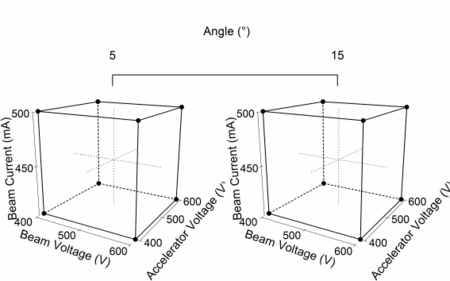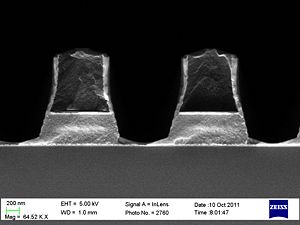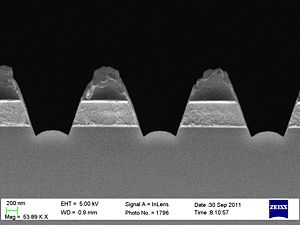Specific Process Knowledge/Etch/IBE⁄IBSD Ionfab 300/IBE magnetic stack etch
Results of Design of Experiments optimization of magnetic stack etching
Process parameters for the acceptance test
To find the optimal parameters, Design of Experiments was applied with the intervals shown on the figure below. The final optimized recipe is listed in the table.
Some SEM profile images of the etched stacks
For a good pattern transfer with IBE a large amount of redeposition on the resist edge has been observed. To reduce this redeposition the best option seems to use a photoresist just thick enough for the wanted etch depth. An alternative is sidewall sputtering at low incident angle. However experiments has shown poor cleaning rate and for narrow structures low angles will give rise to shadowing effects.
Endpoint detection with SIMS
 |
|---|
End point detection is achieved by SIMS, and the etch rate is approximately 25 Nm/min. Resist stripping can be hard due to burned resist, to remedy this try to lover the current. Changing the currect will chance the sidewall angle and new studies of etch profiles will be necessary. For help, discussion and further info please contact Kristian Hagsted Rasmussen.




